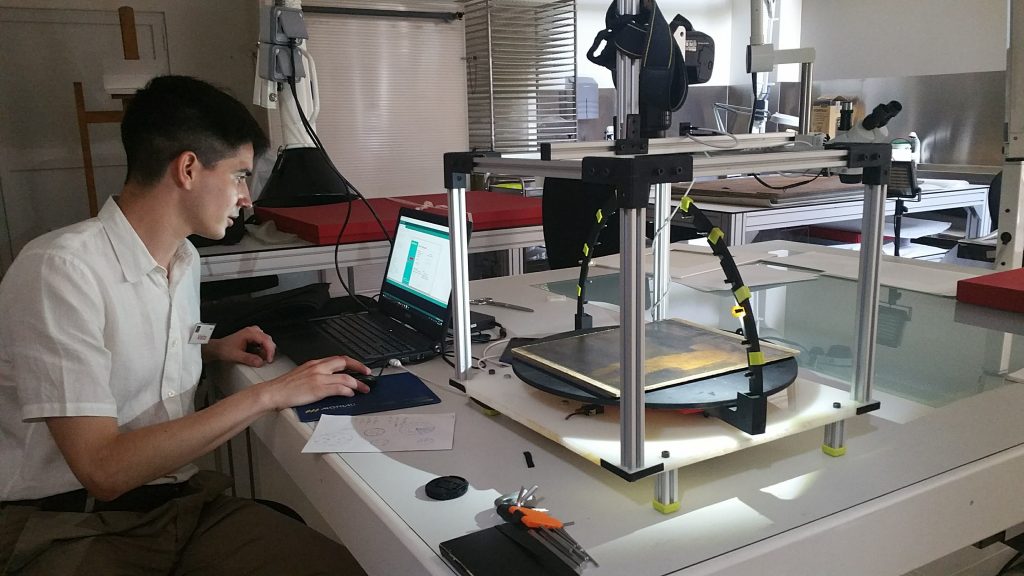On Monday the 15th of July, the researchers from MECAMAT Mainardo Gaudenzi, Judit Molera and their Traineeship student Jaime Aparicio, have performed a series of analysis on different art sketches at the MNAC restoration laboratories by means of an RTI device developed at UVIC-UCC.
This device, named IMAGOartis, was developed on the course “Integrated Projects II” in the degrees of Mechatronics Engineering and Electronic Industrial Engineering and Automation, under the supervision of Mainardo Gaudenzi, Pau Català and Xavier Armengol. During this course, the students Jaime Aparicio, Eric Sabariego and Junjie Zhu, developed a first prototype of a semi-automatic, low-cost and open source RTI device, which will give cultural heritage researchers new means for scientific imaging analysis. Although the RTI technic is not new, their device provided a better control of the structural light needed for it, a computerized control of an attached camera and a small, portable and easy to use design. All these characteristics offer an easier and faster way to apply RTI analysis. The structural light allows to carry out different analysis on one same piece, replicating always the exact same illumination points, which gives identic results, showing wear caused by time and external or climate conditions. Its small and portable design makes it perfect to fit in almost anywhere it would be needed, and its fast assembling and easy to use interface makes it a practical device for restoration professionals.
During his internship as engineer student, Jaime Aparicio has improved the automatization of the device by upgrading its hardware and software characteristics. Also, the device now allows bigger cameras, such as reflex, which enhances the results of the analysis by improving the quality of the images, along with a remote control of the camera.
This device was originally developed by the request of MNAC itself. Therefore, the analysis developed at their laboratories mark a significant and satisfactory result for the MECAMAT aim and work with this project. The results obtained from the analysis, provided fast and satisfactory results “in-situ”, as well as the understanding of the restoration professionals needs and the real-life tests, gave us new enhancement targets to achieve on further versions of the device. The MNAC restoration professionals were impressed by the devices design, its small size and portability, but mainly by the clear results provided from the objects of study. It allowed them to determine a controversial drawing technic used in that sketches.
Currently, Eric Sabariego is developing a second version as his final degree project with another image analysis technic included, which will soon be finished and ready to be tested analysing more pieces. We plan to have even more and with a wider range of technics and sizes versions on a near term of time.






Leave a Reply